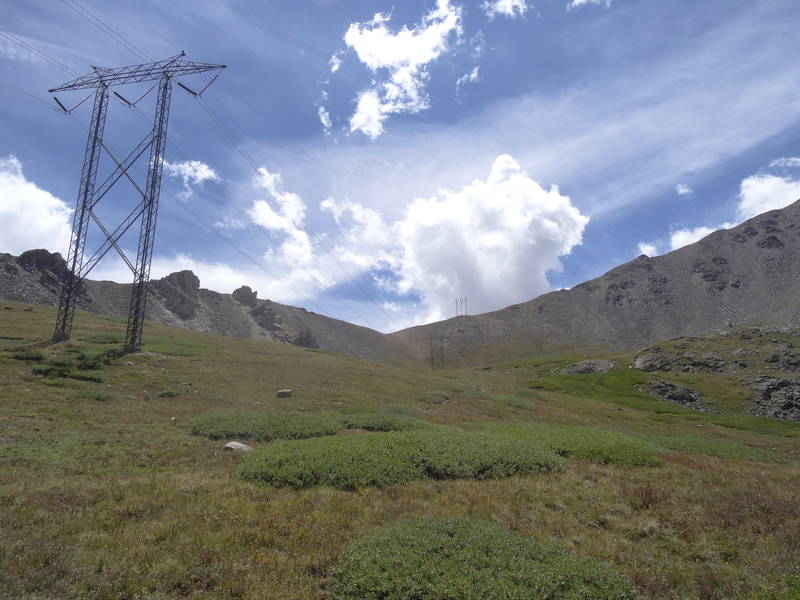
The 1909 Shoshone Transmission Line at Argentine Pass on the continental divide - electrical engineering wonder. At the Southern side of Argentine Peak, shown, the transmission line crests at about 13,500-ft elevation. Engineers decided that, to ensure good service, a second line would be built on the Northern side of the peak. Named the auxiliary transmission line, it was a 3 mile long line that branched from switching towers on each side of the peak and crested at 13,628-ft. Here, the winds are very strong and the landscape barren. Many stories of this pass have been written and told from the linemen and patrols tasked in the wintertime to stay in the cabin here and patrol the pass. Two men in the summer and four in the winter. Weather permitting, two men would ascend from the Eastern switch to the 13,500-ft Southern pass, hike around Argentine Peak to the auxiliary transmission line and descend the auxiliary to the cabin and switch point. One account said "It takes a real man to do Argentine in the winter." According to a 1912 Electrical World article, five canyons converge to produce some of the strongest winds on the continent and at the crest could blow from either direction. The highest recorded wind speed was 165 miles an hour, at which the gage was blown away. Patrolmen stuck at the crest during quick forming storms had to lash themselves to the angle iron on the tower. One mans dog was blown off the mountain and never seen again. During the winters, conductors and insulators were massive, heavy clumps of ice and snow. Temperatures have dropped to 59 degree below 0 and snow is sometimes 30-ft deep. In the summer time, some of the most electrical storms on the continent form over the peaks. |